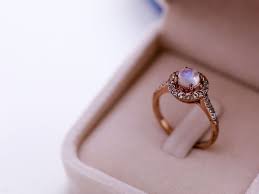I often meet people who want to know the price of diamonds that they keep at home, as a treasure that they were given as a gift or have inherited from grandmothers and mothers. It is clear that, in this case, the sentimental value of the jewel intervenes: it is worth a lot because we perceive it as unique.
But to value diamonds and do it well, not only do you have to eliminate any hint of subjectivity, but also have knowledge of gemology and be specialized in this precious stone. And it is that while appraising other pieces such as gold is easy, since you only have to do acid checks, the diamond is much more complicated.
I am going to teach you how to calculate the price of a diamond in the same way that the professionals do it.
The value of diamonds: the four "c"
The parameters on which an appraiser must base himself to consider the value of a diamond are four: "carat", "clarity", "colour" and "cut", that is, weight, clarity, color and size.
Each parameter has an associated measure and range. Weight, to begin with, is measured in metric carats, for which the abbreviation “ct” is used and not “k”, which is used to define the purity of gold. There is a relationship between size and weight, of course, and generally a three millimeter diamond weighs 0.1 ct. One that weighs 5.2mm usually weighs about 0.5 ct, and one that goes up to 6.5mm will hit the carat. The larger a diamond is, the higher the price per carat will be if the rest of the characteristics are maintained.
Purity, on the other hand, measures flaws or inclusions in the structure. Seen through a magnifying glass and valued, they will be associated with the letters of a scale as an indication of purity. For example, FL and IF correspond to "Flawless" and "Internally Flawless", that is, without marks or inclusions in view of a 10X loupe or without visible inclusions under the same instrument. As for how to influence the price, we must consider that the purest diamonds, with fewer inclusions, are increasingly difficult to find, so they will cost more.
As for the color, we must bear in mind that it is not only transparent, but that there is a whole range of possibilities: from pure transparent to light yellow, passing through blue, red, pink, green, etc. It is a factor that has quite an impact on the price, since it is one of the best perceived at sight. The most valued are the transparent ones, without color.
The cut, on the other hand, is the shape of the diamond. Depending on how it was carved, it will have certain angles and proportions that will cause it to reflect more or less light, which affects its shine. It can be round, square, teardrop-shaped or rectangular, among others, the first being the most popular and demanded for its brightness. Its manufacturing costs are high, which will also influence the price.
When the diamond is graded, considering the above parameters, it is necessary to refer to the Rapaport tables, which collect the price of the diamond in dollars in relation to these parameters. These, in addition, are updated month by month to adjust to the market and the diamond exchange.
There are also laboratories such as the Spanish Gemological Institute that offer a diamond appraisal service and provide a certificate.
The problem with these services is that you have to send the piece by mail, while if you find a trustworthy jewelery appraiser in Valencia, they can do it in front of you.
As I said, it is a job for which you have to be prepared, but the important thing is to be clear that in the price of a carat of diamond, not only the weight will intervene, but also the clarity, color and cut.
The advantages of a professional appraisal
A good jewelery appraiser knows how to value the materials it is made of, noting whether it is precious or semi-precious stones, but also evaluating its historical value. He will do so by putting his extensive knowledge into play and using the materials available to him, with which not everyone is familiar. But, above all, he will do it with total discretion, respect and professionalism.
It is not only about learning how to know the price of a diamond, but what can be done after the appraisal. As a professional, I offer different possibilities: the sale, the disassembly for the use of the stones in another design, the restoration, the adaptation of size and shape or the contact with interested investors. My job is to advise, the decision is yours.
However, I consider that knowing the price of diamonds is a methodical task that requires, in addition to knowledge, a lot of honesty. It is necessary to assess the main parameters, which are weight, purity, color and size, but also historical value and market circumstances. The best thing, therefore, is to put you in the hands of a professional appraiser.



























Comments (0)